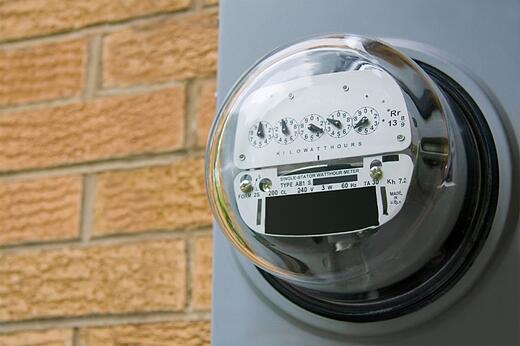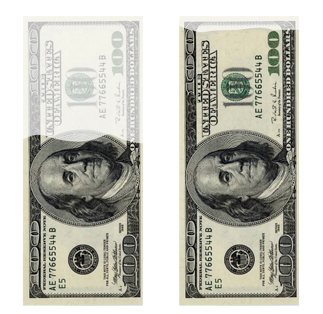Be prepared this winter! Look our for these four winter heating issues, posted by NextStepLiving:

Be prepared this winter! Look our for these four winter heating issues, posted by NextStepLiving:

Want to monitor your electric or gas energy use? Energy.gov has provided an article on how to read residential electric and natural gas meters --

You can read your own meters to help monitor your electric or gas energy use. During the heating season, your energy use should be compared to the number of heating degree days for the same time period; during the cooling season, compare your energy use to the number of cooling degree days.
Heating and cooling degree days are a simple measure of the effect of weather on your energy needs: using the average temperature for each day, each degree Fahrenheit below 65°F is counted as one heating degree day, and each degree Fahrenheit above 65°F is counted as one cooling degree day. Your heating and cooling use should be proportional to the number of heating and cooling degree days for the time period in question.
You may also wish to contact your local utility companies for more information about reading your meter. If monthly information is good enough, your utility bills could have all the information you need. Just be sure the bills are based on actual, not estimated, meter readings, and be aware of when the meter was read, because the time period between readings can vary. Contact your local utility if you are uncertain about this.
The basic unit of measure of electric power is the watt. One thousand watts are called a kilowatt. If you use one thousand watts of power in one hour you have used a kilowatt-hour (kWh). Your electric utility bills you by the kWh.
The standard electric power meter is a clock-like device driven by the electricity moving through it. As the home draws current from the power lines, a set of small gears inside the meter move. The number of revolutions is recorded by the dials that you can see on the face of the meter. The speed of the revolutions depends on the amount of current drawn -- the more power consumed at any one instant, the faster the gears will rotate.
When reading an electric meter, read and write down the numbers as shown on the dials from right to left. When the pointer is directly on a number, look at the dial to the right. If it has passed zero, use the next higher number. If it has not passed zero, use the lower number. Record the numbers shown by writing down the value of the dial to your extreme right first and the rest as you come to them. Should the hand of a dial fall between two numbers, use the smaller of the two numbers.
Natural gas is commonly measured by the cubic foot, and you are billed by the thousands of cubic feet (MCF) or hundreds of cubic feet (CCF). You may also be billed by the therm, which is about the same as a CCF or 100 cubic feet. To measure the amount of electricity or gas that you use, the utility installs a meter between the incoming electric power or gas lines and the point of distribution at the house.
A gas meter is driven by the force of the moving gas in the pipe, and also turns faster as the flow increases. Each time the dial with the lower value makes one complete revolution, the pointer on the next higher value dial moves ahead one digit.
When reading a gas meter, read and write down the numbers as shown on the dials from left to right (opposite of an electric meter). It is important to note that on both types of meters, the hands of adjacent dials turn in opposite directions to each other.
Note that some newer electric and gas meters use digital displays instead of dials. The difference between one month's reading and the next is the amount of energy units that have been used for that billing period.
(Original article: http://energy.gov/energysaver/articles/how-read-residential-electric-and-natural-gas-meters )
As you know, Westinghouse is proud to sell high efficiency water heaters! We stumbled upon this article on WWLP.com and thought it'd be perfect to share.
BOSTON (WWLP) – Massachusetts is the most energy efficient state in the nation. The state was recognized for one of Governor Patrick’s top priorities: creating policies and programs that promote clean energy.
For the fourth consecutive year, Massachusetts ranked first in the nation when it comes to energy efficiency.
The American Council for an Energy-Efficient Economy applauded the state for lowering energy costs for residents, cutting greenhouse gas emissions and enforcing policies that promote a clean energy future.
These initiatives have saved taxpayers more than 93 million dollars in energy costs and has created thousands of jobs in the Commonwealth.
Meg Lusardi, Mass. Dept. of Energy Resources said, “It is also an economic driver for job growth. We’ve seen 65-thousand workers in the energy efficiency sector, and then it also improves our impact on the climate.”
The Department of Energy Resources told me that something as simple as using energy-saving light bulbs can lower costs on a daily basis.
Readers - below is a handy infographic with great tips and statistics about home heating! (infographic from Energy.gov). Enjoy!

(Original posting: http://energy.gov/articles/energy-saver-101-infographic-home-heating )
Below are some water heating tips to remember as the cold weather approaches! (From Next Step Living)

Did you know that heating water accounts for up to 25 percent of your home’s energy use? Slash that cost while curbing your energy use:
Keep warm. Insulate the pipes that go to and from your hot water heater in an unfinished basement. Otherwise you’ll waste a lot of heat (and money) as your water moves through pipes in a cold basement.
(Original article: http://www.homeenergy.tips/money-savers/three-ways-cut-your-hot-water-bill)